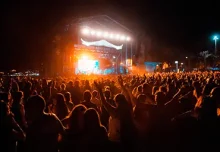The holiday season is a time of faith, miracles, goodwill, and tradition. While some holiday traditions are self-explanatory, others have a deeply rich history rooted in legend. Sit back, grab a hot cocoa, and enjoy learning about the last of our favorite famous Christmas traditions in this series, Christmas trees.
Christmas Trees
Evergreens, like the coniferous trees used as Christmas trees today, have long held special meaning in the winter months. Evergreens are a classification of plant that stays green year-round, and these unique plants have long been a symbol of hope, safety, and perseverance around the world. Many early traditions surrounding evergreens revolve around the winter solstice, which takes place in the Northern Hemisphere on December 21 or 22 each year. The winter solstice is the shortest day and longest night of the year and was celebrated to mark the coming of spring in several ancient civilizations.
Many cultures believed that winter came when their sun god weakened and fell ill. They would hold celebrations on the winter solstice to celebrate the sun god’s returning strength. In ancient Egypt, people would fill their homes with green palm rushes to symbolize their sun god Ra’s triumph over death. Ancient Romans would celebrate the return of Saturn, the god of agriculture, in great Saturnalia feasts during the solstice and would decorate with evergreen boughs to remind them of the coming seasons. Even the Celts and Vikings decorated their temples with evergreen boughs to represent eternal life and to worship sun gods.
The modern Christmas tree, however, didn’t appear until 16th century Germany. Devout Christians began decorating evergreen trees in their homes to celebrate the holiday season. In areas where wood was scarce, people would even build large pyramids of wood and use evergreens and candles to decorate their makeshift trees. Protestant reformer Martin Luther is credited with first adding lights to a Christmas tree in the early to mid-1500s when the twinkling stars inspired him to affix candles to his Christmas tree’s branches using wire. Early ornaments included things like fruit, nuts, candies, and even cookies.
The first record of Christmas trees in America was not until the mid-1800s. This late adoption is largely due to the New England Puritan’s laws banning any pagan practices, like decorating the beloved evergreens, from the Christmas holiday. Any decorations or celebrations aside from a December 25 church service were banned and those who participated were fined through much of the 17th and 18th centuries.
When an 1846 painting of Queen Victoria and Prince Albert, alongside their children, standing around a Christmas tree, the popularity of the decorated evergreen became wildly popular in British society and with the fashion-conscious society of the American East Coast. By the late 1800s, the trees’ popularity had spread across the country. When electricity became common in American homes, towns began putting up large, lit-up trees in their squares and parks.
Whether large or small, real or faux, we hope that your Christmas tree brings you the joy and hope that people have experienced for hundreds of years. From all of us at Empower Brokerage, Happy Holidays.
Agents
Empower Brokerage is dedicated to helping you educate your clients on the insurance they need and staying on top of their health. Whether it’s through webinar training, one-on-one calls, seminars, or marketing plans. We want you to be successful. Give us a call if you have any questions 888-539-1633.
Quick Links:
Originally from the snow-capped Rockies, Macee moved to Texas in 2016 to pursue an undergraduate degree in Strategic Communication. She currently serves as a writer and editor for Empower Brokerage, as well as the marketing manager for Preferred Senior Advisors. Macee is also working on her Master’s degree in management, and hopes to inspire others with her passion for telling stories through varied digital and print marketing efforts.





